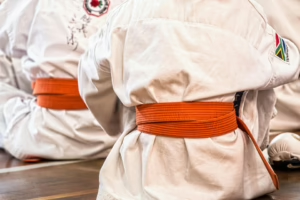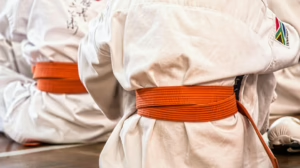The Evolution of Golf: From Sticks and Balls to High-Tech Gear
Golf is a game that has captivated players and spectators for centuries. Its origins are often traced back to 15th-century Scotland, where early versions of the sport involved hitting a simple ball with a stick along the natural landscape. Today, golf is a multi-billion-dollar global industry, characterized by cutting-edge technology and star-studded tournaments. The journey from rudimentary beginnings to a high-tech phenomenon reflects not only the sport’s evolution but also advancements in materials, equipment design, and player performance.
The Humble Beginnings
The earliest known iteration of golf can be linked to a game played in the marshy lands of Scotland, where players would use wooden sticks to hit a feather-stuffed leather ball into holes in the ground. This simple pastime evolved over the years, with the game formally codified by the late 19th century. By then, golf had garnered attention and popularity, leading to the establishment of the first golf clubs and the organization of the first Open Championship in 1860.
Equipment was rudimentary during this period. Players often used handmade clubs crafted from local hardwoods such as hickory, while the balls were made from leather and filled with feathers. The craftsmanship of the clubs was paramount, with each handcrafted club unique to its maker. These early designs laid the groundwork for a sport that would continuously adapt and innovate.
The Industrial Revolution and Standardization
With the onset of the Industrial Revolution in the 19th century, golf equipment began to experience significant transformation. The introduction of iron and steel allowed for stronger and more durable clubheads. By the early 1900s, the development of the gutta-percha ball—made from the rubbery sap of the tropical sapodilla tree—marked a significant improvement over the featherie balls of the past. These new balls were cheaper, more reliable, and allowed for greater distance and accuracy.
As golf gained popularity, the need for standardization became apparent. Golf associations began to set rules regarding equipment specifications, including the size and weight of clubs and balls. This standardization paved the way for a competitive environment that appealed to players of all skill levels.
The Mid-20th Century: The Age of Innovation
The mid-20th century was a period of rapid innovation in golf technology. The introduction of materials like fiberglass and then nylon changed club manufacturing. The 1960s saw the advent of the wooden driver, which combined the artistry of traditional craftsmanship with modern materials. Players could achieve greater distances and accuracy than ever before.
In addition, the game’s aesthetics evolved. Golf attire shifted from conservative dress to more colorful and functional clothing, influenced by professional players and emerging fashion trends. The golf course landscape also saw transformation, with the design of courses becoming more varied and challenging, reflecting the increasing skill levels of players.
The Technological Revolution of the 21st Century
The turn of the millennium heralded an era of unprecedented technological advancement in golf. The introduction of computer modeling and robotic testing has allowed manufacturers to create clubs that maximize performance at every level of play. Clubs are now designed with precise weight distribution, adjustable loft settings, and optimized sweet spots. Materials such as titanium have revolutionized driver design, allowing for larger clubheads that produce higher speeds and greater distances.
Golf balls have similarly evolved, with complex internal structures allowing for enhanced spin control and distance. High-performance balls designed for professionals now feature multi-layer constructions, offering players the ability to control their shots more finely.
Data-Driven Performance and Personalization
Today’s golfers have access to a wealth of data that was unimaginable a few decades ago. Launch monitors and GPS technology provide insights into swing speed, ball trajectory, and distance, allowing players to fine-tune their game more effectively than ever. Advanced analytics are not just limited to the professional level; amateur players can now utilize technology to assess their performance and make data-driven improvements.
In addition, there’s been a recent trend toward personalization in golf equipment. Custom fitting has become an integral part of the buying process, with players able to tailor their clubs to individual swing characteristics and preferences. This level of customization has led to improved performance and greater satisfaction among golfers.
Looking Ahead: The Future of Golf
As we look to the future of golf, advancements in technology will continue to redefine the game. Virtual reality experiences and simulations are likely to offer new methods for training, making the sport more accessible to newcomers. Innovations in sustainability will also shape the way courses are designed and maintained, responding to the environmental challenges facing the planet.
The evolution of golf represents not just a transformation of a sport but a reflection of societal changes and technological advancements. From humble beginnings with sticks and balls to high-tech gear that enhances performance, golf continues to embrace innovation while honoring its rich history. As the sport moves forward, it remains a bridge between tradition and modernity, captivating players and fans alike across the globe.
[1]: [Modern Footnote Source Link]

























Add Comment